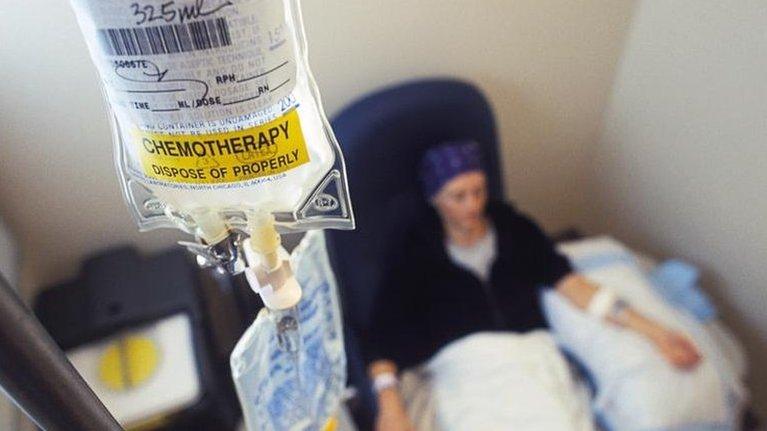A&E waiting time targets improve in Wales
- Published

The Welsh government wants 95% of patients to be seen in A&E in four hours
Hospital A&E department waiting time targets to see and treat patients have improved on the previous year, latest figures show.
A total of 87.7% of patients were seen within a four-hour target time compared with 84.3% the year before.
However, the 95% target was not reached once over the 15 months to March.
The Welsh government said the vast majority of patients receive intervention or assessment within two hours of arrival at A&E units.
A&E units see between 70,000 and 90,000 people a month depending on the time of year, the figures, external show.
A Welsh government spokesperson said: "We are working closely with NHS Wales to develop intelligent measures which better describe the care provided to patients in A&E to complement the existing four-hour target."
On Wednesday, Health Minister Mark Drakeford announced a pilot project to monitor cancer treatment times to give a better picture of whether patients receive timely care.
And in March he outlined a major overhaul of the way ambulance service and A&E department performance in Wales is monitored and measured.
Political opponents have questioned the motives.
Hospital referrals
The Welsh government set health boards a target to admit, transfer or discharge 95% of A&E patients within four hours. It also monitors waiting times up to eight hours and more than 12.
In March, 1,005 patients spent 12 hours or more from arrival until admission, transfer or discharge
This was down from 2,250 in April 2013 when the target was introduced
Referral to treatment time, external (RTT) figures showed 86,213 patients were treated during March
Of those waiting to start treatment, 88.9% were waiting less than 26 weeks - an increase of one percentage point from February
97.5% were waiting less than 36 weeks - up 1.2 percentage points from February
A Welsh government spokesman said that figure was "disappointing".
But he said he was "encouraged" to note separate monthly figures for diagnostic services waiting times, external of more than 14 weeks fell in March as "health boards work on reducing all waits".
"While it is disappointing that the total number of patients waiting more than eight weeks has not decreased this month, the standard wait remains between five-six weeks," he added.
- Published31 May 2013

- Published7 May 2014

- Published26 March 2014

- Published13 November 2013
